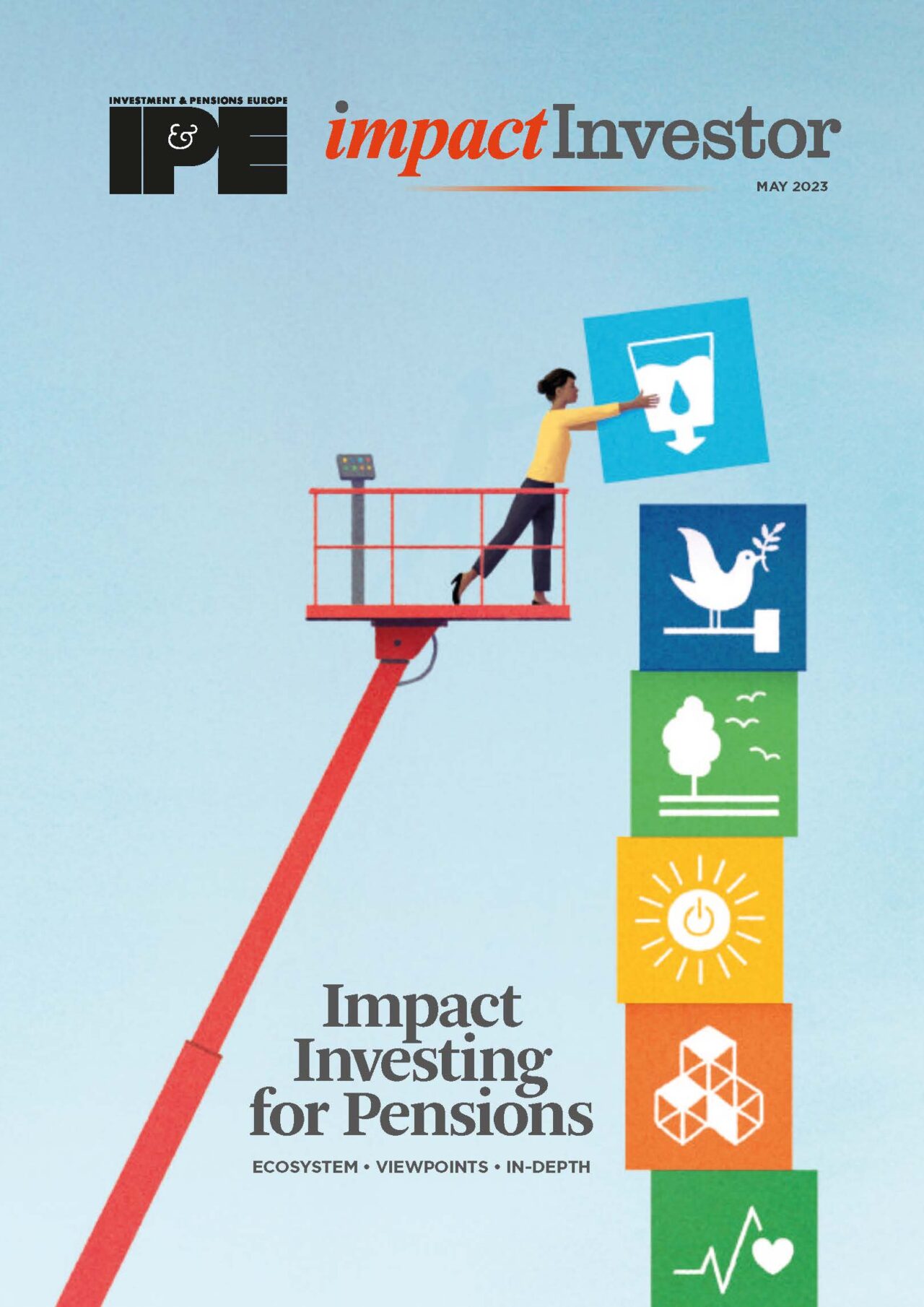There is massive shortage of affordable housing in the UK and the characteristics of the asset class are ideal for institutional investors. Pension funds are attracted to the prospect of stable long-term income to match liabilities.

There is massive shortage of affordable housing in the UK and the characteristics of the asset class are ideal for institutional investors. Pension funds are attracted to the prospect of stable long-term income to match liabilities
Institutional investment in affordable housing in the UK has increased recently. But even a cursory glance at the characteristics of the asset class and the marked demand-supply imbalance suggest there is much more room for growth.
It is estimated that, of the 4.5m affordable homes in England, for example, only 25,000 are owned by institutional investors – less than 1%.

Pension funds are attracted to the sheer volume of an asset class that offers the prospect of stable long-term income, helping them to match their present and future liabilities. Questions of conscience, morality and social good take second place to fiduciary duty. At least for some. Others, such as Cath Webster, CEO of PfP Capital, see things through a different kaleidoscope, as we shall come to hear.
A key factor in the income stability equation is the strength of demand and the diversified nature of the income. “Demand is high and the income from rental payments is diversified over many tenants and therefore very steady and secure,” says Mathieu Elshout, head of sustainability and impact investing at real assets investment manager Patrizia.
Undersupply
There is a chronic undersupply of housing of all kinds in the UK, but especially affordable housing. “We need to see 145,000 affordable homes built every year, but the delivery model is constrained and we are seeing only 50,000 built,” says Elshout.
The long-term persistent lack of supply will always be the major issue, says Craig Wright, head of European research for real assets at Abrdn. “It is estimated that around 50% of UK housing supply in the next 100 years already exists today, based on current development levels. This implies the quality and efficiency issue will persist.”
Abrdn’s interest in the build-to-rent residential sector includes its £500m joint venture with retailer John Lewis. When announced in December 2022, John Lewis said the venture featured “commitments to affordable housing and sustainability tied to our existing 2035 net-zero pledge”.
Complicating matters is the growing realisation that those responsible for the delivery of essential property maintenance face rising costs to curate stock that is ageing and already inadequate in terms of insulation, energy costs and the safety of occupants.
Institutional investment is viewed as providing at least part of the solution required in the UK. The nature and shape of that investment can take a number of forms, from direct 100% ownership and control of properties by the very largest investors to investment in pooled funds or alongside the housing associations.
Housing associations have grown in size and status since Margaret Thatcher’s government of the 1980s, but more recently some have suffered from criticism of neglect and maintaining buildings in poor condition.
The UK was late in recognising the possibilities for institutional investment that have long since been demonstrated in other European countries, suggests Elshout. Recent inflation has caused construction costs to rise markedly, undermining the already strained ability to deliver affordable housing. It needs institutional and effective government support, he argues.
Wright says: “Government and planning departments need to have a major rethink on housing policy. When selling plots of land, municipalities might want to consider factors beyond that of the price being offered – looking at the broader offer in terms of the best concept and the most affordable housing. Unlocking private investment by subsidising land purchases could have a surprising impact, considering the positive sentiment towards affordable housing amongst investors.”
Jack Burnham, head of affordable housing at Octopus Real Estate, identifies three reasons for growing interest from UK pension funds. The first is already familiar: stable indexed returns, with rent and capital appreciation directly or indirectly linked to inflation. The second is the potential to generate social and environmental impact. The third is place-based impact: investors want to see the location of their investments improved.
“One of the key priorities for New Arch Homes, our regulated registered provider of social housing is to increase the availability of social housing targeted at people with the lowest incomes,” says Burnham. “Another is to achieve a net-zero portfolio in such a way that we reduce and eventually even eliminate energy bills for our customers. Our sister company, Octopus Energy, makes its own air source heat pumps and we install renewable energy solutions to our homes wherever possible.”
Andrew Davey, head of liability aware strategies at CBRE Investment Management, says: “If you build proper rental homes, people want to stay there for the long term. From an investor perspective, focusing on the environmental and social elements of ESG reduces risk, rendering investment more attractive.” In this context, access to independent impact monitoring is assuming growing importance, he explains.
Impact investing
Impact is the gateway to affordable housing, and not just a welcome by-product, says Webster, whose emphasis is on building communities, taking real estate investment opportunities from inception to building to integration.
“People have often associated the word impact with discounts and low returns, but by achieving social impact you will deliver better long-returns,” she says. “Housing is not like retail and offices. Demand is incredibly strong and unwavering, and affordable housing offers a defensive core-plus income stream with a high proportion of cash. When you have thousands of customers, the turnover of tenants has little effect upon total income. Even in COVID we were okay. Without impact you don’t get the conversation in the first place.”
The conversations referred to are those between investors and fund managers, she explains.

Impact investment is the pre-requisite nowadays to getting most investors to look at the fund strategy – and then they want to see what financial returns are being provided.
Webster cautions, however, that it is essential to have a very strong operations capability, in terms of property maintenance, management, leasing and customer relations. “Real estate can be very fraught for owners,” she says. “You have to do it well to ensure that you are constantly improving. The sector has interesting dynamics; you need to understand the asset class fully.”
Alex Notay, placemaking and investment director at PfP Capital, adds: “In real estate, risks are around planning, viability and construction. But critical to success over the long term is a real focus on operations and management. Residential real estate can generate strong and stable returns, but you need to keep on top of funding and actually doing the maintenance.”
Keith Breslauer, managing director and senior partner at Patron Capital, cites the obstacles placed in the way of obtaining planning permission as a primary cause for the shortage of affordable homes. “Gaining planning permission is very difficult regardless of the state of the underlying assets,” he says. “In extreme, the price differential of agricultural land versus residential developable land is the widest in almost all European markets. Local councils can override nationally-set priorities, which has serious knock-on effects.

“There is a huge need for affordable housing in the UK and we have expertise and available cash to add to our interest in the sector. Our track record includes the Women in Safe Homes fund, a joint venture between Patron and Resonance. We were asked by Big Society Capital, and indirectly the UK government, to come up with a fund to help women suffering domestic abuse and provide them with permanent housing.”
The fund, in which the Church of England is a high-profile investor, buys and refurbishes properties, mindful of improving their environmental credentials, before handing them over to housing partners to provide women in insecure situations with secure tenancies.
It also provides support to women. According to Resonance, “this holistic approach means women are not only provided with a safe and stable home, but with support they are empowered to take control of and create lives of their choosing, for themselves and their children”.
The fund aims to provide around 150 safe and affordable homes across the UK and to house around 350 women and their children over its lifetime. It has to date teamed up with seven housing partners: Refuge, Nacro, Winner, Daizybell Homes, SaferPlaces, Stop Domestic Abuse and Ella’s.
This article is part of the editorial content of the Impact Investing for Pensions report. You can download a digital copy of the report here.






